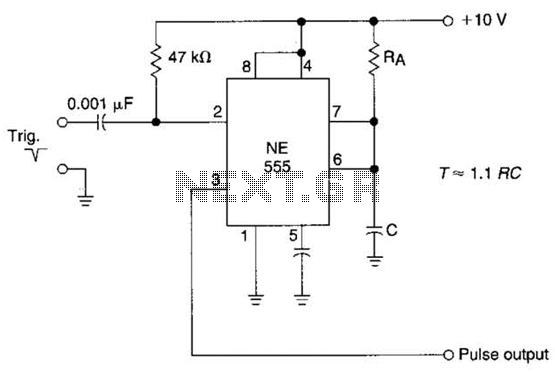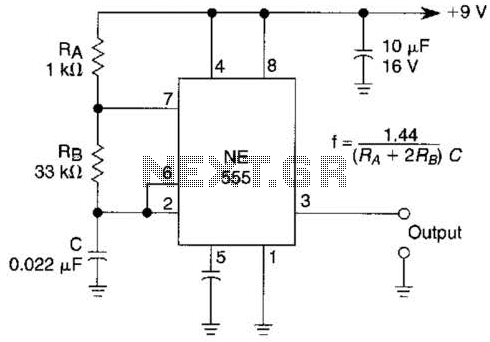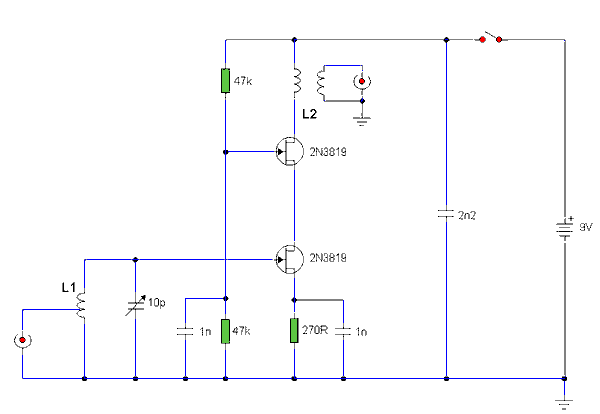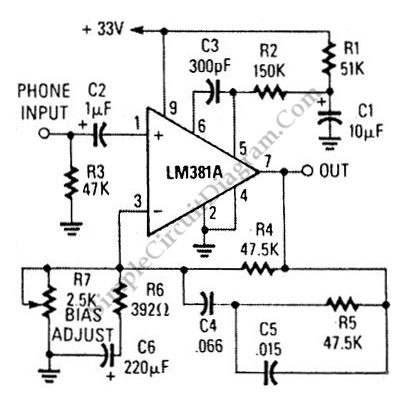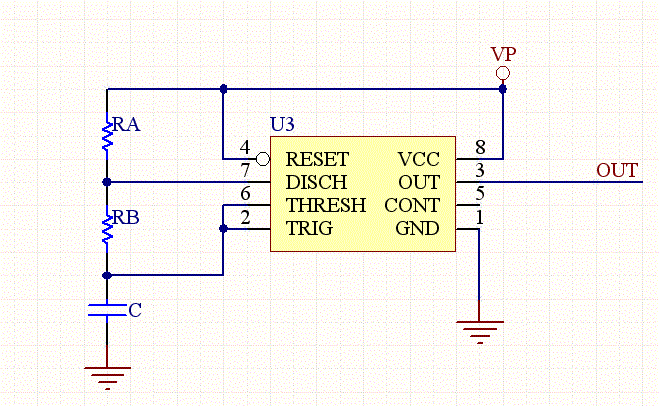
Fender rhodes peterson vibrato preamp
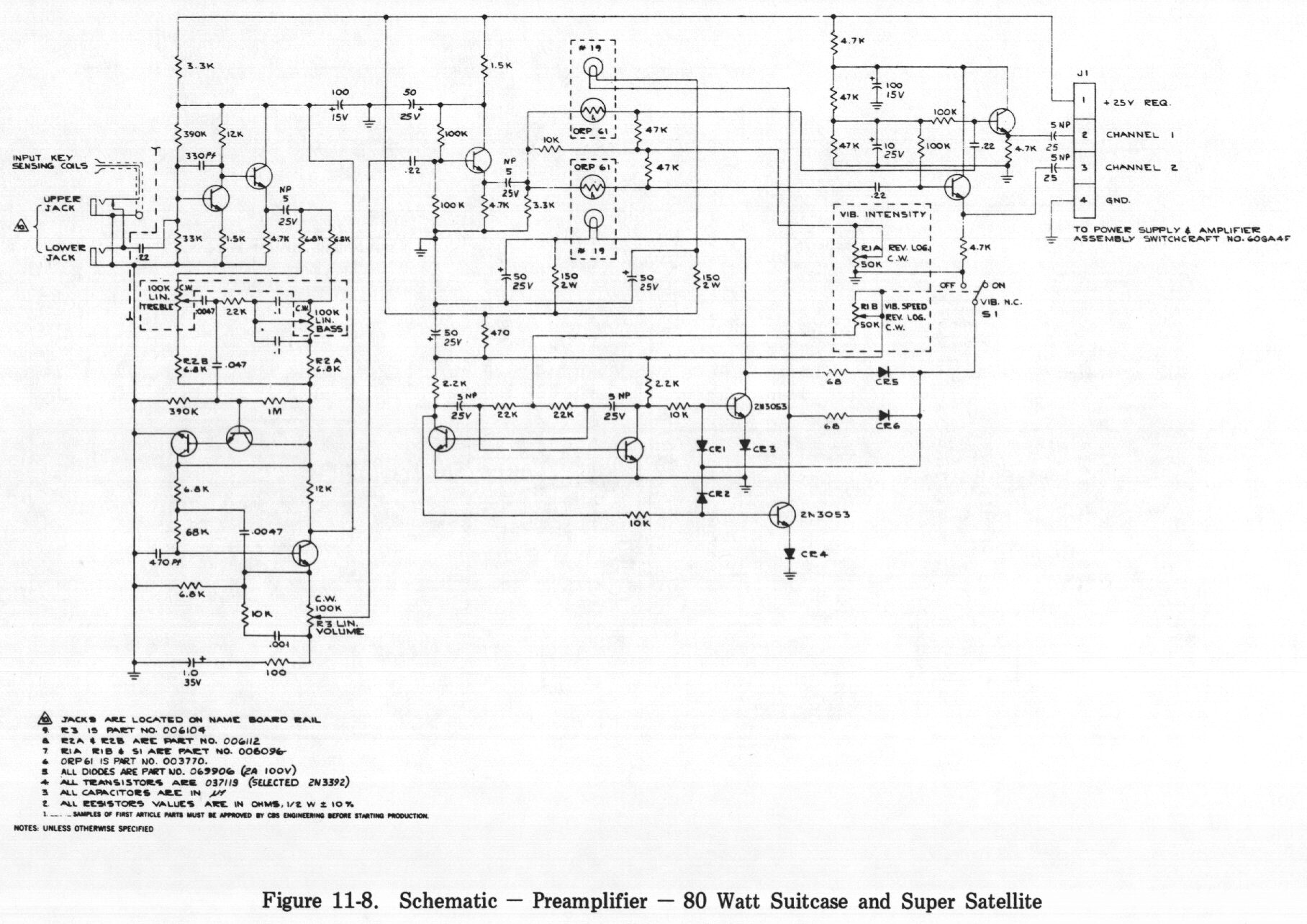
There is significant hiss produced by the circuit. Reducing the treble knob alleviates this issue, although it diminishes treble response. The hiss becomes more pronounced when the vibrato circuit is activated. After these observations, the board was re-capped according to the schematic values and the values shown in a referenced image. At this stage, only the electrolytic capacitors have been replaced. Swapping these capacitors had minimal effect on the overall hiss, but it resulted in a thumping sound during the attack phase of the vibrato waveform, which was absent before the recap. Upon receiving the preamp, it was noted that previous modifications had altered the capacitor values; specifically, four 47µF capacitors and one 16µF capacitor were replaced with 100µF capacitors. While it is known that adding RC networks to the oscillators can quickly resolve thumping vibrato, this approach is undesirable as it alters the vibrato waveform to a triangle shape, potentially negatively affecting sound quality. Hiss is not typically caused by filter capacitors, which usually fail and result in hum or unwanted DC leakage. In low voltage circuits like this, semiconductors are often the primary suspects for hiss. Although changing the electrolytic capacitors is advisable, since reducing treble lowers the hiss, the source is likely in the input stage, which consists of two transistors. It is recommended to test or replace these transistors. The circuit specifies a 2N3392, but any suitable low-noise signal transistor should suffice. Operating at +25V, many transistors are compatible. Suitable options include MPS8097, 2N5088, or MPSA18, along with a stock of 2N5210. While there may be more recent alternatives, these older models are readily available. It is noted that Fender Rhodes instruments inherently produce hiss due to their high impedance and inductive nature. The theoretical noise generated by a resistor increases with resistance value, and high-frequency noise rises with frequency due to impedance characteristics. A dynamic noise filter, akin to a fast-acting noise gate targeting high frequencies, was previously employed. This filter activates with the tine attack and reduces hiss during sustain, resulting in a smoother sinusoidal decay characteristic of the Rhodes sound. Utilizing a three-circuit ring as a crossover allows for frequency sweeping and inverting polarity of the bandpass output before mixing with low-pass and gated high-pass outputs. This configuration can serve as an intriguing equalizer. Although current circuits and paperwork are unavailable, it is acknowledged that noise gate circuits have likely advanced over the past two decades. While NTE parts can be considered, it is important to remember that the NTE reference indicates the closest match to the original, and these parts are not direct replacements. The NTE numbers may correspond to multiple industry parts, and while they may be noisier, newer transistors could provide a worthwhile reduction in hiss for a minimal cost. However, a dynamic filter is preferred over a noise gate to avoid cutting off sustain.
The circuit in question appears to be a preamplifier with a vibrato effect, likely used in musical applications such as electric pianos or guitars. The hiss issue could stem from several sources, including the input stage transistors, which are critical in amplifying the input signal while introducing minimal noise. The choice of low-noise transistors is essential in maintaining audio fidelity, especially in high-impedance circuits.
The implementation of a dynamic noise filter suggests a sophisticated approach to managing unwanted high-frequency noise without compromising the musical qualities of the instrument. The use of a three-circuit ring for frequency manipulation indicates an advanced understanding of signal processing, allowing for tailored sound shaping that can enhance the performance capabilities of the instrument.
In summary, addressing the hiss and vibrato thumping involves careful consideration of component values and selection, as well as potential circuit modifications to optimize sound quality without sacrificing essential characteristics.There is considerable hiss brought on by the circuit. Cutting the treble knob helps greatly (but no fun with treble cut!). When the vibrato circuit is active, the his is worse. Following these discoveries, I re-capped the board given the schematic values as well as those shown on this picture: At this point I`ve only changed out the electrolytics. Swapping them had little effect on overall hiss, but the swap caused the vibrato to thump in the attack portion of waveform. There was no thumping before the re-cap. When I received this preamp I noticed that someone had altered the cap values. If you follow that picture, the 4x 47uf caps and 1x 16uf cap were all installed as 100uf. I know there is a quick-fix for thumping vibrato by adding some RC networks to the oscillators, but I want to avoid this if possible.
This changes the characteristics of the vibrato wave to a triangle and I think it will negatively impact the sound. Hiss is not generally caused by filter caps. They fail and cause hum or unwanted DC leakage. Usually in a low voltage circuit like this my first suspects for hiss would be semiconductors. Changing the e-caps is probably a good idea though. If the treble control drops the hiss, then the source is before that control, so the input stage. It only has two transistors. SCope it to see, or just replace them. Drawing says 2N3392, but most any nice low noise signal transistor should work fine. The circuit only runs on +25v, so most transistors cover that. Low noise NPN signal transistors My own go-to choice would probably be an MPS8097 or maybe 2N5088. And if there are any left in my drawer some MPSA18. I forget now what I used them in a lot, but I have a bunch of 2N5210 too. Those are old school numbers, there may be some more recent favorites, but I have large numbers of those in stock.
I suspect if you went to On Semi and pulled up the selector guide page for low noise TO92 you would find some other possibilities. It really isn`t critical. Fender Rhodes do hiss. Always did, always will; we just didn`t notice so much before digital. Its a function of being high impedance (all those series coils, like lots of guitar pickups) and inductive; the theoretical noise generated by a resistor at a given temperature goes up with the value of the resistance, and the amount of high frequencies goes up because the impedance rises with frequency.
My trick was a dynamic noise filter; a sort of noise gate with a very fast attack speed and quite fast delay, operating only on the high frequencies. It opens with the "ting" of the tine attack, and drops the hiss as soon as the sustain comes in, leaving a relatively sinusoidal decay (which is what a Rhodes produces anyway, unless you hit it hard enough for major nonlinearities in the tine/pickup position) Using a ring of three circuit as a crossover you can easily sweep the frequency; invert the polarity of the bandpass output before mixing it with the LP and the gated HP (incidentally, if you put pots on the three signals this is a very interesting instrument equaliser).
I`m afraid I`m in the middle of moving and all my circuits and paperwork are sealed in cardboard boxes, but I`m sure noise gate circuits will have improved in the twenty years since I built it, anyway. Nothing prevents you from trying those NTE parts, but always remember the NTE cross refernce tells you which one of THEIR transistors they think is closest to the original, the NTE parts are NOT the originals.
That is why one NTE number crosses to hundreds of industry parts, and not just one. Yes they are noisy, but I think transistors have improved in the last 40 years, and for the whole dollar a pair of the newer types would cost, it is worthwhile to try to reduce it. But I don;t disagree, a noise gate might be the ticket. Not noise gate; that chops off all the sustain. Dynamic filter; only the high frequencies brought down, Mine was a copy of the Audio a 🔗 External reference
The circuit in question appears to be a preamplifier with a vibrato effect, likely used in musical applications such as electric pianos or guitars. The hiss issue could stem from several sources, including the input stage transistors, which are critical in amplifying the input signal while introducing minimal noise. The choice of low-noise transistors is essential in maintaining audio fidelity, especially in high-impedance circuits.
The implementation of a dynamic noise filter suggests a sophisticated approach to managing unwanted high-frequency noise without compromising the musical qualities of the instrument. The use of a three-circuit ring for frequency manipulation indicates an advanced understanding of signal processing, allowing for tailored sound shaping that can enhance the performance capabilities of the instrument.
In summary, addressing the hiss and vibrato thumping involves careful consideration of component values and selection, as well as potential circuit modifications to optimize sound quality without sacrificing essential characteristics.There is considerable hiss brought on by the circuit. Cutting the treble knob helps greatly (but no fun with treble cut!). When the vibrato circuit is active, the his is worse. Following these discoveries, I re-capped the board given the schematic values as well as those shown on this picture: At this point I`ve only changed out the electrolytics. Swapping them had little effect on overall hiss, but the swap caused the vibrato to thump in the attack portion of waveform. There was no thumping before the re-cap. When I received this preamp I noticed that someone had altered the cap values. If you follow that picture, the 4x 47uf caps and 1x 16uf cap were all installed as 100uf. I know there is a quick-fix for thumping vibrato by adding some RC networks to the oscillators, but I want to avoid this if possible.
This changes the characteristics of the vibrato wave to a triangle and I think it will negatively impact the sound. Hiss is not generally caused by filter caps. They fail and cause hum or unwanted DC leakage. Usually in a low voltage circuit like this my first suspects for hiss would be semiconductors. Changing the e-caps is probably a good idea though. If the treble control drops the hiss, then the source is before that control, so the input stage. It only has two transistors. SCope it to see, or just replace them. Drawing says 2N3392, but most any nice low noise signal transistor should work fine. The circuit only runs on +25v, so most transistors cover that. Low noise NPN signal transistors My own go-to choice would probably be an MPS8097 or maybe 2N5088. And if there are any left in my drawer some MPSA18. I forget now what I used them in a lot, but I have a bunch of 2N5210 too. Those are old school numbers, there may be some more recent favorites, but I have large numbers of those in stock.
I suspect if you went to On Semi and pulled up the selector guide page for low noise TO92 you would find some other possibilities. It really isn`t critical. Fender Rhodes do hiss. Always did, always will; we just didn`t notice so much before digital. Its a function of being high impedance (all those series coils, like lots of guitar pickups) and inductive; the theoretical noise generated by a resistor at a given temperature goes up with the value of the resistance, and the amount of high frequencies goes up because the impedance rises with frequency.
My trick was a dynamic noise filter; a sort of noise gate with a very fast attack speed and quite fast delay, operating only on the high frequencies. It opens with the "ting" of the tine attack, and drops the hiss as soon as the sustain comes in, leaving a relatively sinusoidal decay (which is what a Rhodes produces anyway, unless you hit it hard enough for major nonlinearities in the tine/pickup position) Using a ring of three circuit as a crossover you can easily sweep the frequency; invert the polarity of the bandpass output before mixing it with the LP and the gated HP (incidentally, if you put pots on the three signals this is a very interesting instrument equaliser).
I`m afraid I`m in the middle of moving and all my circuits and paperwork are sealed in cardboard boxes, but I`m sure noise gate circuits will have improved in the twenty years since I built it, anyway. Nothing prevents you from trying those NTE parts, but always remember the NTE cross refernce tells you which one of THEIR transistors they think is closest to the original, the NTE parts are NOT the originals.
That is why one NTE number crosses to hundreds of industry parts, and not just one. Yes they are noisy, but I think transistors have improved in the last 40 years, and for the whole dollar a pair of the newer types would cost, it is worthwhile to try to reduce it. But I don;t disagree, a noise gate might be the ticket. Not noise gate; that chops off all the sustain. Dynamic filter; only the high frequencies brought down, Mine was a copy of the Audio a 🔗 External reference
